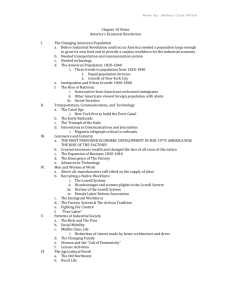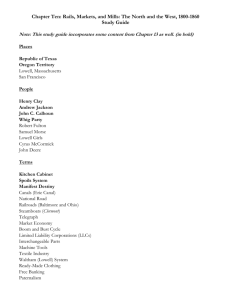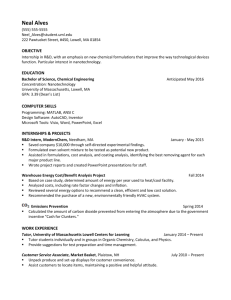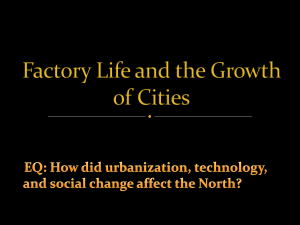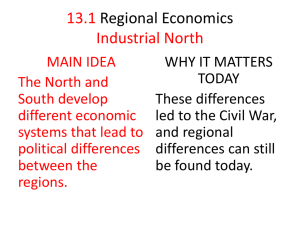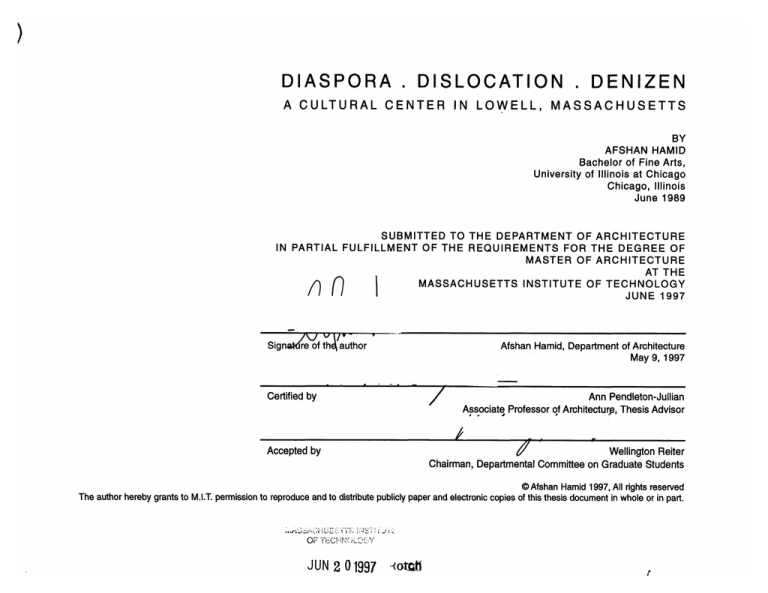
DIASPORA
DISLOCATION . DENIZEN
A CULTURAL CENTER IN LOWELL, MASSACHUSETTS
BY
AFSHAN HAMID
Bachelor of Fine Arts,
University of Illinois at Chicago
Chicago, Illinois
June 1989
SUBMITTED TO THE DEPARTMENT OF ARCHITECTURE
IN PARTIAL FULFIL LMENT OF THE REQUIREMENTS FOR THE DEGREE OF
MASTER OF ARCHITECTURE
AT THE
MASSACHUSETTS INSTITUTE OF TECHNOLOGY
JUNE 1997
Sn
Signatdrof th author
Afshan Hamid, Department of Architecture
May 9, 1997
Certified by
Ann Pendleton-Jullian
Associate Professor gf Architecturp, Thesis Advisor
Accepted by
Wellington Reiter
Chairman, Departmental Committee on Graduate Students
@Afshan Hamid 1997, All rights reserved
The author hereby grants to M.I.T. permission to reproduce and to distribute publicly paper and electronic copies of this thesis document inwhole or in part.
0-..............-
C)r~~fC'~
JUN 2 01997
I* r%' Y-C,
'iotth
Image courtesy of Lowell Historical Society
Thesis Advisor:
Thesis Readers:
ACKNOWLEDGEMENTS
First, I owe much gratitude and thanks to my thesis committee.
My advisor, Ann Pendleton-Jullian for her insight, intuition and
intelligence. Her guidance and primary role in the thesis issue
and site were brilliant. My reader Krsysztof Wodiczko for his
vision of the 'alien' issues and for instilling the thesis with a consciousness. Thanks also goes to my reader Dennis Adams, for
evoking metaphor in the thesis.
Ann Pendleton-Jullian
Krsysztof Wodiczko
Dennis Adams
I am grateful for the initial research support from the town of
Lowell, MA. In particular the Lowell Historical Society and the
Lowell Visitors Center.
I am indebted to my thesis studio for their discussions, debates
and support. Thank you all for being part of a rich and enlightening academic career.
My husband, Danial Ahmed, for his support and encouragement.
Lastly, I would like to dedicate this thesis to my parents, Dilshad
and Abdul Hamid. I have learned much from both their individual
lives, the courage, vision and endurance of immigrating to a new
homeland and restarting their lives many times. Their success is
a dedication for their family and to each other.
i.
Acknowledgement
ii.
Abstract
1.0.
1.1.
1.2.
Analysis
Historical Perspective
Theoretical Frame
2.1.
2.2.
Site
From Boston
View of Site
2.3.
The Mill . The Canal
3.1.
Program
Description
4.1.
4.2.
Sectional Studies
Sectional Response
2.0.
3.0.
TABLE OF CONTENTS
Design Method
4.0
5.0.
5.5.
5.6.
Design
Site Model
Final Model
Urban Plaza
Views from the Canal
Diagrammatic Bifurcation
Programmatic Bifurcation
Generational Bifurcation
Plans
Sections
6.0.
Conclusion
7.0.
Bibliography
5.1.
5.2.
5.3.
5.4.
Unless otherwise noted all images and photos are taken by the author
co
ABSTRACT
The identity of the stranger begins in dreams of hope and fear,
and the dream of exile begets modernity From here we must
examine how this process of naming and the phenomenon of
estrangement are integral to the cultural dynamics of modernity.
The stranger is always located within society and we must ask
what are the available categories for defining these levels of interaction.
Modemity as Exile p.2
Nikos Papastergiadis
Image from The Continuing Revolution, p.422
DIASPORA
.
DISLOCATION
A Cultural Center for Lowell,
by Afshan Hamid
.
DENIZEN
Massachusetts
Submitted to the Department of Architecture
on May 27, 1997 in partial fulfillment of the
requirements for the Degree of Master of Architecture
The condition of being migrant is peculiar to modernity. Being migrant is
often a result of political estrangement from one's homeland, or dislocation due to economic pressures. It is a status which requires the individual to be temporary, shifting and dynamic. If the position becomes static,the migrant becomes an immigrant alien in a new and unfamiliar geographical location. Thus immigrant is the radical instability of the modern experience. Immigrant is not only a consequence of modernity, but
also a metaphor for the process of modernity. Being migrant has the
trauma of dislocation, of relearning communication, rethinking a cultural
dialogue. It isalso an interiorized alone sense of loneliness, and even a
longing for a return to a familiar place and time. Being immigrant is a
journey, both mental and physical.
This thesis concerns itself with the issues of being an immigrant. In particular, the debate will revolve around immigrants of the last twenty
years, the Asian community. I am interested in this group because they
are still struggling to assimilate themselves into the American experience. The town of Lowell, Massachusetts has a community of recent
immigrants from Vietnam, Cambodia and Korea. These people have
been encouraged to resettle their lives due to government programs and
a strong manufacturing industry in Lowell. They inhabit a part of Lowell
known as Acre and the Lowlands. These areas have been home to the
first Irish settlers in Lowell in the 1850s. The site for the project is itself
a borderland condition, precisely where the existing Lowell community
stops development and the immigrants begin their settlement. The area
is currently a residential fabric on one side and an industrial locality on
the opposite. The Pawtucket Canal, a man-made canal, runs through
the site, acting both as a boundary and a seam.
Thesis Supervisor: Ann Pendleton-Jullian
Title: Associate Professor
O
06
ANALYSIS
Image from Lowell, The Story of an Industrial City, p. 69
HISTORICAL PERSPECTIVE
Lowell's rise to rapid success as New England's first mill town was due in
of the city, the Acre area or New Dublin. Here they built their
large part to its unorthodox work force. The mill fathers recruited Yankee
own neighborhoods and established their own tenement housing.
daughters from agricultural areas in New England. These young women
Because the mill district was reserved for the Yankee daughters,
flourished in the new environment gaining money for their own dowrys as
the Irish as well as other immigrant groups settled in areas out-
well as independence. Under a very paternal system, their day shifts as
side of the mill. These communities became a quilt of immigrant
well as free day off was regulated by the mill bell and strict curfew. The
districts.
young women were housed in mill run board rooms.
In 1880 rebellions streaked across the town. The young Yankee
The building of the canals, railroads, dams and mills were relegated to the
women demanded wage increases and shorter work hours. The
new immigrants, the Irish. These new laborers settled in Lowell in the mid
new settlers took on lower paying wages and were quickly sought
eighteenth century. As the new foreigners they settled in the periphery
as the replacement labor for the Yankee women. Following the
Irish came the French Canadians in the 1860s, the Greeks and
Polish in the 1890s and early 1900s. The mill town rapidly
became a diverse immigrant city.
The presence of the immigrants in the mills brought drastic
change to the mill environment and the town. The immediate
effect was the decrease in the number of Yankee daughters. The
desperate economic need of the immigrants also introduced family labor into the system. Only by pooling all resources could a
typical family earn enough for a living. This marked change also
rid Lowell's reputation as a paternalistic town.
0)
co
The French Canadians also followed a similar pattern. "The family consisted of father and mother, six sons between the ages of 2
and 18, and five daughters, ages 8 through 24, all living in a four
Massachusetts state labor report in 1881 referring to them as 'The Chinese
room tenement. The father, a blacksmith's laborer, earned on
of the Eastern States". 2 Yet despite these harsh circumstances these
average $8 a week; four of his children combined to bring in
another $21 weekly."i
Despite the evident exploitation of the immigrant groups, hostilities
prevailed between the native born and the new class of residents.
The persecution of the French Canadians is evident in a
groups evolved their own churches, civic centers and neighborhoods.
They sought strength from within their own communities.
Image from The Continuing Revolution, p. 427
THEORETICAL FRAME
Proposition 187 was a publicly endorsed decree in California in
1995. It mandates illegal immigrants from receiving public assistance, such as education and non-emergency welfare. This public decree is especially alarming since Los Angeles county is a
major mecca for new settlers. More than one third of the population of Los Angeles city is foreign born, four times the figure of the
nation as a whole. "The issue confronting the region is whether
this newly polyglot metropolis can work, and that is not a question
for the region alone. In L.A., late 20th Century America finds a
mirror to itself."3 On a national level this years welfare reform
bars legal
immigrants from receiving public assistance. A reading of these
nation of cheap labor and a new growing industry.
propositions has profound measures on our national outlook. Publicly
the criteria acknowledges differences in our social makeup. As citi-
Another cultural dynamic also came into play. Between 1966 and 1978
zens we propagate that which is unacceptable into a circumscribed
the citizens of Lowell established the historical mill district as part of a
definition. We proclaim that which is foreign should remain foreign.
National Park program. This incentive promoted the restoration of
In merely translating the contemporary dilemma we reveal ourselves
many mill buildings and also invigorated Lowell with a tourist economy.
to be at the limits of our own ideas of otherness.
Grants were afforded by federal agencies for a downtown revitalization
program. Federal National Endowment for the Arts and the Historic
In Lowell, Ma the situation is even more vexing given its historical
American Engineering projects supported planning for the canal system
precedent of immigrants. The government re-location of a new class
and conversion of mills into museums and public buildings. The con-
of citizens into the Acre and Lowlands Area describes a contemporary
sultants hired for the revitalization program focused their efforts on
dilemma. In the mid seventies a shortage of labor combined with a
planning the downtown structures, the majority which were built before
bleak economy led to a recession in the American system. Lowell
1850. As a result, this critical phase in Lowell's rise framed a view of
was particularly hard hit because the textile mills required cheap labor
the city concentrated on the mill district. "Although consultants were
to operate. Beginning in 1979, skilled foreign textile workers were
periodically reminded by Lowell residents to take note of ethnic history,
lured to Lowell. The incentive was a temporary H-2 visa and enough
it did not provide for the inclusion of structures in the park which would
income earned to send home to their families. The new labor force
mandate interpretation of the immigrant experience." 4 The Lowell com-
was considered essential to the survival of the mills and Lowell's
mission team along with its consultants placed the needs of downtown
economy. This new labor force characterized Lowell's prosperity in
revitalization ahead of neighborhood, ethnic and school programs. In
the 1980s. In addition, high tech companies such as Wang
reference to the inclusion of immigrants as part of Lowell's history and
Laboratories and microchip industries started moving into Lowell.
growth the Park Commission and its consultants remained indifferent.
This rapidly evolving microchip industry also required the service of
cheap labor to remain competitive. Lowell resurfaced with the combi
To support this choice, the appeal of departing from
a traditional Park Service concern with mansions of
the elite in isolated neighborhoods and moving toward
a concern with 'Working class" mill environments in the
downtown was highlighted. Nevertheless the version of
Lowell history presented in the commission's final report
to Congress had largely removed the conflict from
Lowell history which th e Historical Society, in its
anthology, and Lowell Museum, in its exhibition, had
begun to address. 5
Edward Said argues, exile iscomprehensible through the internalization of
rupture. Thus modern exile is not exclusively confined to the massive displacement of peoples from their homelands but can also be located in the
specific forms of silencing opposition without expulsion. 6 The relevance of
any contemporary examination of exile can only be secured if it is located
Image from The Continuing Revolution, p. 226
in the broader cultural dynamics of displacement in modernity. The diaspora of the current local condition of Lowell negates an understanding of an
as Belvidere, Andover, Acre, Midmarket. Within these neighbor-
aprior condition. It also accentuates that yesterdays immigrants can pro-
hoods group identity was fostered through the founding of a Irish
claim more residency and affluence than immigrants of today.
Catholic church and schools. These were reinforced through voluntary associations and also local saloons. The resultant of these
From their arrival in 1822 until the turn of the century the Irish constituted
establishments was a distinct identity set apart from the dominant
the largest single ethnic group in the city of Lowell. This rapid expansion
American community. Yet, the Yankee response was not always
was supported by the establishment of distinct neighborhoods set apart
favorable.
from Yankee mill districts. These areas expanded to what today is known
There were incidents of outright physical
harassment and brutality by the Yankees which
the Irish often returned in kind. Other forms of
Yankee dominance were more subtle and
pervasive. For example, Irish women were kept
in the lowest paid jobs in the mills while Irish
men were employed in occupations with the lowest
status in the city. 7
main neighborhoods of the Irish district and also the main thoroughfare
of Lowell. The procession moved down the main commercial streets of
the city, past the mill districts, and the Yankee residential areas. It
passed by the corporate boardinghouses, City Hall, and the Irish resi-
There was fostered outright antagonism and hostility towards the Irish
dential areas. "John Berger argues that the route that such a proces-
settlers. In Lowell the Yankee population out numbered the immigrant
sion takes is symbolically important because it signifies a capturing or
population, a discord of racial and ethnic boundaries became estab-
taking over of various parts of the city. The marchers, because of their
lished
sheer numbers, transform the areas through which they march into a
"temporary stage on which they dramatize the power they still lack".8
For the Irish an annual parade became a voice to actively promote
For the Irish in Lowell, the parade symbolized that it was they who had
their identity and to rally their political concerns. The parade became
built the city and continued to maintained it.
a vehicle through which to display social antagonism and conflict. On
The historical and contemporary events in Lowell only negate homoge-
one level the parade was a means to establish the importance of an
nous urban and national cultures. If Lowell is a sensor for the larger
Irish past and heritage. On another the parade became the vehicle
urban network, then a redefinition of binary terms is required. No longer
through which the Irish could voice their inclusion as workers and
can we describe the ambivalent situation in terms of exclusion/inclusion,
exclusion as denizens. The parades in effect became a means
boundary/seam, marginal/tolerance. In a sense the metropole of the
through which political, social and economic conditions could be
next century is being redefined through new communities.
antagonized. In a Yankee dominated town, the parades were a way
to publicly display community and solidarity.
Each year the route taken by the St. Patrick's Day parade encompassed areas beyond the Irish neighborhoods. It included the four
NOTES
1. Robert Weible, ed., The Continuing Revolution, (Lowell Historical
Society, 1991), p. 239
2. Ibid, p. 241
3. Karen Brandon, L.A. Immigration Story Signals U.S. Urban Changes,
The Chicago Tribune, November 16, 1996
4. Ibid p. 387
5. Ibid p. 387
6. Edward Said, "Reflections on Exile", Marginalization and Contemporary
Culture s, (MIT Press, Cambridge, Ma 1992), p. 164
7. Robert Weible, ed., The Continuing Revolution, (Lowell Historical
Society, 1991), p. 217
8. Ibid p. 227
LC
T-
SI T E
Moody Stree
.k
Feeder Gatchouse
Sir
W
Mr
MarketM('%s
/Msrk
(L t w
,
let
Me
.t
LowerLock
IMsl~
Mils)
vo-rkamltng
Image from Lowell The Story of an Industrial City p.99
The foreigner's speech can bank only on its bare rhetorical
strength, and the inherent desires he or she has invested in it.
But it is deprived of any support in outside reality, since the foreigner is precisely kept out of it. Under such conditions if it does
not founder into silence, it becomes absolute in it's formalism,
excessive in its sophistication - rhetoric is dominant, the foreigner
is a baroque person.
Julia Kristeva
Strangers to Ourselves, p. 21
xLawrence Mills
cBO
Mills
lk,4Ills)0
M
4
r
Tremont Gatehouse
:Y LARCOMLok
PARK
iBoolt
Mills
Massachusetts
0
*
Moody Street
Feeder Gatchouse /
0/0
ct
/taretMi
^,iton'#:> *4
SCC
Locks
MiM/
Loel
M
\l)
SO(ITH
cottON
8
Lopketo
FROM BOSTON
I rented a car from the Budget on Mass Ave, as a typical tourist
may do. I was positioning myself into two frames, that of tourist
visiting New England's first industrial mill town, and that of an
alien setting foot into foreign territory. The journey from Boston
took roughly a half hour on 93 North. The signs for Lowell were
an exit 38. I took the ramp and then a right into a thoroughfare of
K-marts, McDonald's, Chevrolet of Lowell and a Marshalls. This
was the outskirts of Lowell. As I continued the neighborhood
became more residential and hills in the terrain began to reveal
themselves. I could also see in the distance the mill district of
Image courtesy of Lowell Visitor Center
Lowell. A split in the road directed me to Park Visitor's Center. It
there were once textile workers there is now an artist's guild and tourism
information. The tourist map is precise in locating the mills, museums,
buildings of historic importance and trolley and canal tours.
The investigation for the site started at Pailin Plaza, which is not located
on the tourist map. In a very circumscribed way your route into the city
leads you out of the city and onto the highway to Boston once more. It
happened four times to me.
Once out of the Visitor's Center on Dutton Street you can walk past the
Swamp Locks, where four canals converge. If you follow the main canal,
the Pawtucket canal, downstream you'll come onto an elevated position
led me through one-way streets through Lowell's prestigious
where you'll be able to see worn-down industrial buildings. Once you
community of victorian stately homes. It wound itself onto
cross over and walk or drive down into this neighborhood, you'll see the
Merrimack Street, the heart of downtown. On either sides were
canal take a severe dip, forming an acute curve in the landscape. On
historic commercial buildings, the Sun, the Bon Marche, past the
either side isAcre and the Lowlands. This is the settlement area of the
Old City Hall. Merrimack Street crosses over Merrimack Canal
new immigrants of Lowell. It is a hybrid of three cultured, Cambodian,
and is also on axis with the New City Hall, a robust stone, turn-
Vietnamese, and Korean. Pailin Plaza itself does not speak written eng-
of-the-century building. The Park Visitor's Center sign gave me
lish, the immediate signs are in figures.
a quick glimpse of everything to be seen, then I took a right and
parked the car.
The Visitor's Center is itself located in a historic mill. Where
SITE
Map courtesy
Co.
THE MILL & THE CANAL
The canal is now mostly used by tourists to revisit Lowell's past,
but it has also gone from being functionalist to being a commodity. The canal in its linearity serves the dichotomy of
inclusion/exclusion, past/present, inside/outside.
22 & 23
In Square Feet
115' x 40'
Seating Capacity for 150
5 units: 15' x 25'
Gallery
Film Center/Auditorium
Restaurants
115' x 45'
Library
For 25 vehicles
Parking
PROGRAM
7 units: 38' x 32'
Housing for Families
3 units: 38' x 32"
Housing for Scholars
55' x 30'
2 units: 45' x 35'
120' x 30'
Image from The Continuing Revolution, p. 181
3 units: 25' x 20'
Adult Lounge
Lecture Center
Youth Center
Learning Labs
Playing Field
2 units: 35' x 30'
20' x 50'
Multipurpose Rooms
Day Care Center
N
The program itself is critical in interweaving the the resident and the visitor. The components of gallery, film center/auditorium, library are activities run by the residents for the visitor. The film center, gallery, and library are key to displaying, and preserving the cultural heritage of the immigrants. The library serves to record oral histories as well as map a collection specifically for and about the immigrants. Their political histories,
stories of their families, their passage to a new homeland, their fears and doubts, successes, and importantly their transition. The film center is a
place for the showing of recent releases by these artists. The gallery houses primarily the work of exiled artists. The connection is rooted to a
strong heritage, as well as the transition to a new.
DESIGN
METHOD
SECTIONAL STUDIES
The section is a method of collecting data and mapping the site. The data collection uses two devices, the frame of the camera and the body.
Starting in the chosen site, the site where the tourist city/historical mill district ends and where the immigrant city/Acre and Lowlands begins,
paces of every twenty steps were taken. At the limit of each pace a photograph recorded the event. This summation of paces gave a precise
recording of the canal, swamp locks, and the surrounding urban fabric, the larger site. The next part of the analysis was to map the data with
the use of a survey map and the photos. The survey map located the buildings, canal and roads in a linear manner. The photos were then used
to translate the singular reading into a vertical dimension. Each vertical dimension becomes a sectional plate. When a collective of plates is
placed on the survey map, it begins to reveal the dimensions of the city. The first dimension was the relationship of the canal to the land contours. Inthe tourist part of town the swamp locks change the level of the water so that it iscloser to the surface of the city. In the immigrant part
of the town, the water retreats to a depth of ten feet. The next relationship is that of the major road that crosses the site, Thorndike Street.
Thorndike Street becomes in section a vertical delimination of the historical city from the immigrant city. Thorndike Street acts as a prime divider
in section of the two parts of the city. The urban fabric of the city is recorded on the plates in relation to the canal and the roadways.
C
SECTIONAL RESPONSE
Following a survey of the larger site, the next level of understanding is the site itself. Here sectional plates once again are used to map the location of the canal, urban fabric, and roadways. An intuitive, linear response follows. The gesture isto act to the mill and the canal in a horizontal
way, and at the same time to interweave components of the larger site.
N~
COl
D E S IG N
VIEWS OF THE SITE MODEL
VIEWS OF THE FINAL MODEL
For the demography of the new internationalism is the history of postcolonial migration, the narratives of cultural and political diaspora, the
major social displacements of peasant and economic refugees. It is in
this sense that the boundary becomes the place from which something
begins its presencing in a movement not dissimilar to the ambulant,
ambivalent articulation of the beyond that I have drawn out: "Always and
ever differently the bridge escorts the lingering and hastening ways of
men to and fro, so that they may get to other banks... The bridge gathers
as a passage that crosses."
M. Heidegger, 'Building, Dwelling, Thinking', in Poetry, Language,
Thought
quoted in The Location of Culture by Homi Bhabha p. 4
THE URBAN PLAZA
34 & 35
The stairwell as liminal space, in-between the designations of identity,
becomes the process of symbolic interaction, the connective tissue that
constructs the difference between upper and lower, black and white. The
hither and thither of the stairwell, the temporal movement and passage
that it allows, prevents identities at either end from settling into primordial
polarities. This interstitial passage between fixed identifications opens up
the possibility of a cultural hybridity that entertains difference without an
assumed or imposed hierarchy
The Location of Culture, Homi K. Bhabha, p. 4
VIEWS FROM THE CANAL
36 & 37
DIAGRAMMATIC
BIFURCATION & PROGRAMMATIC BIFURCATION
Programmatically the building is bifurcated on many levels. The first relationship of understanding is that between the tourist/visitor and the resident/immigrant. The second division is a generational bifurcation, between the youth population and the adult population.
The generational bifurcation is an understanding of the adult population to learn a new language, adapt to a foreign culture, and to provide a
community to transition into. The youth center allows for the autonomy and independence of a younger population, struggling in its own way to
adapt and transition.
a>
CO
CO
PLANS
1 Auditorium
2 Playing Field
3 Youth Center
4 Learning Lab
5 Lecture Center
6 Parking
7 Entrance from Street
8 Entrance
9 Entrance from Canal
10 Adult Lounge
0.---
2
4
4
4
N
PLAN OF THE GROUND FLOOR
11 Gallery
12 Housing for Scholars
13 Urban Plaza
14 Restaurants
15 Youth Center
W000
13
14
PLAN OF THE SECOND FLOOR
16 Multi-Purpose Room
17 Daycare Center
18 Housing for Families
16
co)
C,.J
06J
PLAN OF THE THIRD FLOOR
SECTIONS
-r
Bridge from Urban Plaza to Gallery
SECTION A - A
I
Youth Center & Playing Field
SECTION C - C
Bridge from Urban Plaza to Library
SECTION B - B
CONCLUSION
The scope of this thesis covered a cultural and political issue. Itwas with this agenda that I sought to discover how architecture may serve a
broader part of our culture.
I am concerned, more importantly, with how architecture can become a dialogue of what isforeign, accepted and tolerated. Potentially, architecture is a medium which can translate the tension of being an alien, unfamiliar, uprooted people into the fabric of the city. The tension of familiar
and unfamiliar raises issues on both sides, how is an immigrant population tolerated by the city, as well as how an immigrant population assimilates itself into a city. Architecture can then ask what is it to be a stranger in our midst, and also what is it to be categorized as a stranger.
Architecture can engage the diversities of publics to reveal critical moments in the life of our city.
Dennis Adams, "10 Thru 20", Thresholds 13, (MIT, Cambridge, MA, Fall
1996, Vol 13)
Homi Bhabha, The Location of Culture, (Routledge, London,1995)
Homi Bhabha, "The Other Question: Difference, Discrimination and the
Discourse of Colonialism", Marginialization and Contemporary Cultures,
(MIT Press, Cambridge, MA 1992)
Francois Biot & Francoise Perrot, Le Corbusier et l'architecture sacree,
(La Manufacture, Lyon, France, 1985)
Charles Edouard &Jeanneret-Gris, Le Corbusier, The Last Works, (Willy
Boesiger, Zurich 1970)
BI B L IO G R A P H Y
Julia Kristeva, Strangers to Ourselves, (Columbia University Press, New
York, 1991)
Joann Faung Jean Lee, Asian Americans, (The New Press, New York,
1992)
Trinh T. Minh-ha, "Cotton and Iron", Marginalization and Contemporary
Cultures, (MIT Press, Cambridge, MA 1992)
Chantal Mouffe, "For APolitics of Nomadic Identity", Travellers' Tales,
(Routledge, New York, 1994)
National Park Service, Lowell the Story o an Industrial ity, (U.S.
Department of Interior Washington D.C.)
Nikos Papastergiadis, Modernity as Exile: The Stranger in John Berger's
Writing, (Manchester University Press, Manchester, England, 1993)
Salman Rushdie, Imaginary Homelands, (Vintage Books, 1995)
Edward Said, Orientalism, (Vintage Books, New York, 1979)
Edward Said, Representations of the Intellectual, (Vintage Books, New
York, 1996)
Edward Said, "Reflections on Exile", Marginalization and Contemporary
Cultures, (MIT Press, Cambridge, MA 1992)
Everett V. Stonequist, The Marginal Man: A Study in Personality and
Culture Conflict, (Russell & Russell, New York, 1961)
Gayatri Chakravorty Spivak, "Acting Bits, Identity Talk", Critical Inquiry,
(University of Chicago, Chicago, June 1992, Vol 18, No 4)
Gayatri Chakravorty Spivak, "Explanation and Culture: Marginalia",
Marginalization and Contemporary Cultures, (MIT Press, Cambridge, MA
1992)
Brian Brace Taylor, Le Corbusier, the City of Refuge, (The University of
Chicago Press, Chicago, IL, 1987)
Wilfred Wang ed., Herzog & De Meuron Projects and Buildings 19821990, (Rizzoli, New York, 1989)
Cornel West, 'The New Cultural Politics of Difference", Marginalization
and Contemporary Cultures, (MIT Press, Cambridge, MA 1992)

